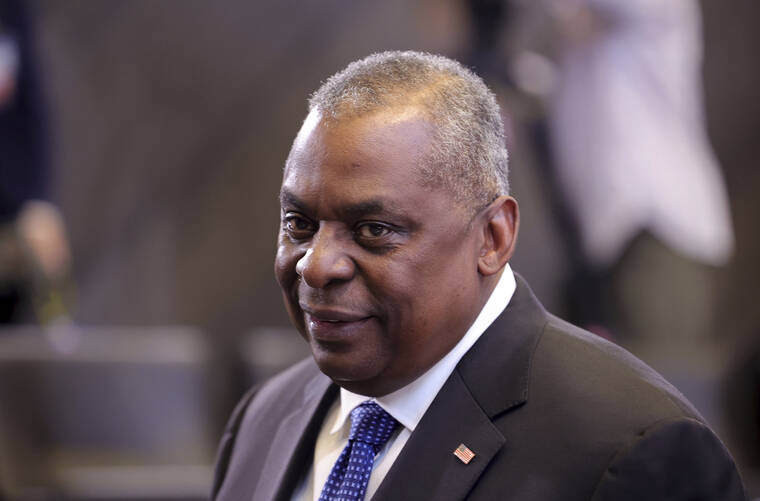I am a kanaka maoli resident of Waimanalo and a member of the O‘ahu Water Protectors. I was part of a delegation of kia‘i wai, water protectors, who traveled to Washington, D.C., last week to meet with Hawaii’s U.S. Rep. Kai Kahele, U.S. Rep. Ed Case and U.S. Sen. Brian Schatz to discuss accelerating the defueling and decommissioning of the Red Hill Bulk Fuel Storage Facility.
We are happy to hear that U.S. Secretary of Defense Lloyd Austin will be visiting Red Hill this week. We applaud his March 2022 decision to shut down Red Hill, and his commitment to defueling and decommissioning as quickly and safely as possible.
I would like to extend an invitation for him to meet with our delegation of water protectors and community organizers, as well as representatives from the affected military and civilian families who live on the Navy’s waterline.
O‘ahu Water Protectors was formed a number of months before 19,000 gallons of petroleum spilled at Red Hill in November 2021 because of fear that a spill was imminent, following the 27,000 gallons that spilled in 2014. Until the 101 million gallons of fuel that currently reside inside Red Hill’s 20 tanks are emptied, the future of all 900,000 residents who live on Oahu and their future descendants remains in grave danger.
Red Hill sits 100 feet away from our sole source aquifer. An aquifer that currently has thousands of gallons of petroleum inside it, unaccounted for. Last month, Honolulu Board of Water Supply monitoring wells detected polycyclic aromatic hydrocarbons, cancer-causing chemicals associated with fuel, heading east toward Honolulu, outside the borders of Red Hill for the first time. Red Hill remains an ongoing threat to all life on Oahu.
The kanaka maoli lived for a thousand years in a self-sustaining, regenerative agricultural society, designed around watersheds, called an ahupua‘a. We ensured our water flowed from mauka (mountain) to makai (ocean). Our ancestors understood we lived in the middle of the ocean and had to carefully steward our finite resources.
Most of the affected military families who faced contamination last fall have relocated. But what about us? The kanaka maoli and the kama‘aina who call Hawaii home have nowhere to relocate to. What is the humanitarian plan if jet fuel enters the public’s water supply?
I spent last week with a 15-year-old who spent six months in a wheelchair following petroleum contamination from Red Hill and continues to battle ongoing health issues. As secretary of defense, Austin is tasked with ensuring the safety of all American citizens, in addition to enforcing U.S. foreign policy objectives. For those of us in Hawaii, we want to ensure we don’t become collateral damage for those objectives. Our health and safety should take precedence.
We believe the critical next step in our civil-military relationship to ensure the safety of our aquifer is for civilian community advocates to be added to the Red Hill Joint Task Force.
The O‘ahu Water Protectors recommend for the task force: U.S. Rep. Kaiali‘i Kahele; Melanie Lau, M.D.; Wayne Tanaka, J.D.; Col. Ann Wright, U.S. Army (retired); and Kamana Beamer, Ph.D. The people recommended include kanaka maoli subject experts as well as those who have spent years sounding the alarm of danger that the leaking Red Hill fuel tanks present.
We’d welcome the opportunity to meet with Defense Secretary Austin in person to kukakuka (discuss) best pathways forward, to ensure the overall health and well-being of the people of Hawaii.
Keoni DeFranco is a member of the O‘ahu Water Protectors, a coalition of community members fighting for safe, clean water.

